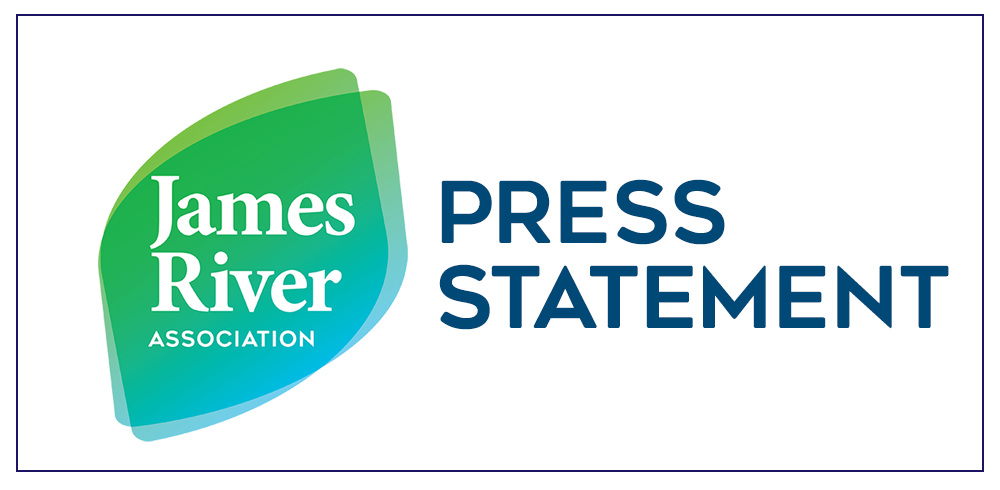PRESS STATEMENT
FOR IMMEDIATE RELEASE:
August 23rd, 2019
CONTACT:
Jamie Brunkow
Riverkeeper and Senior Advocacy Manager
(757) 634-4541
jbrunkow@thejamesriver.org
Virginia’s Phase III Chesapeake Bay Cleanup Plan
Plots Course to Fully Healthy Bay and James River
Today, the Northam Administration released the final Phase III Watershed Implementation Plan (WIP), Virginia’s path to meeting its pollution limits within the next 5 years to restore the health of the Bay and its tributaries. The plan specifies the actions needed to meet pollution reduction targets for each river basin including the James River. Virginia’s plan will now go to the Environmental Protection Agency for review to ensure that it sets forth all the necessary initiatives capable of meeting our state’s responsibility under the Chesapeake Bay Cleanup Plan by the 2025 deadline.
“Virginia’s plan charts a course to achieve a Grade A James River by 2025,” said Bill Street, CEO of the James River Association. “We have made significant progress since 2010, but we have much more work to do in the next 5 years to ensure the health of our waterways. This plan calls on all of us to take the tough but necessary steps to restore these resources. It’s absolutely critical that state leaders step up and provide the policies and funding that Virginia’s communities need to improve their local streams, James River, and Chesapeake Bay.”
The Phase III WIP calls on Virginia’s cities, farms and wastewater utilities to play an equitable role in restoring water quality. To reach the plan’s pollution reduction goals from the agricultural sector, high levels of participation are needed from farmers to implement practices such as riparian buffer plantings, cattle exclusion fencing, and nutrient management. Similarly, more work is needed to address urban stormwater through the implementation of green infrastructure and practices which keep runoff pollution from reaching our waterways. Among other initiatives in the WIP is a proposal to hold wastewater treatment plants throughout the state to the same water quality treatment standard of 4mg of nitrogen per liter of water. On average, wastewater released into the James River carries more nitrogen pollution per liter than any other Bay tributary in the state. Last year, the James River received 76% of the nitrogen discharged by Virginia’s permitted wastewater facilities.
“Investment in the upgrade of Virginia’s wastewater treatment plants will be essential to Virginia’s success in meeting our Bay Cleanup goals on time,” said Jamie Brunkow, Senior Advocacy Manager and James Riverkeeper for the James River Association. “Setting statewide treatment standards will ensure wastewater utilities are all held to the same bar, improving the health of our river and the well-being of those that use it.”
“Everyone has a role to play in restoring the Chesapeake Bay and its tributaries. Virginia’s WIP shares the load across every sector and basin, but it will take significant buy-in from state leaders and stakeholders to invest the resources we need to be successful.”
####
ABOUT THE JAMES RIVER ASSOCIATION: The James River Association is a member-supported nonprofit organization founded in 1976 to serve as a guardian and voice for the James River. Throughout the James River’s 10,000-square mile watershed, the James River Association works toward its vision of a fully healthy James River supporting thriving communities. With offices in Lynchburg, Richmond, Williamsburg, and Scottsville, the James River Association is committed to protecting the James River and connecting people to it. For more information visit www.thejamesriver.org.

